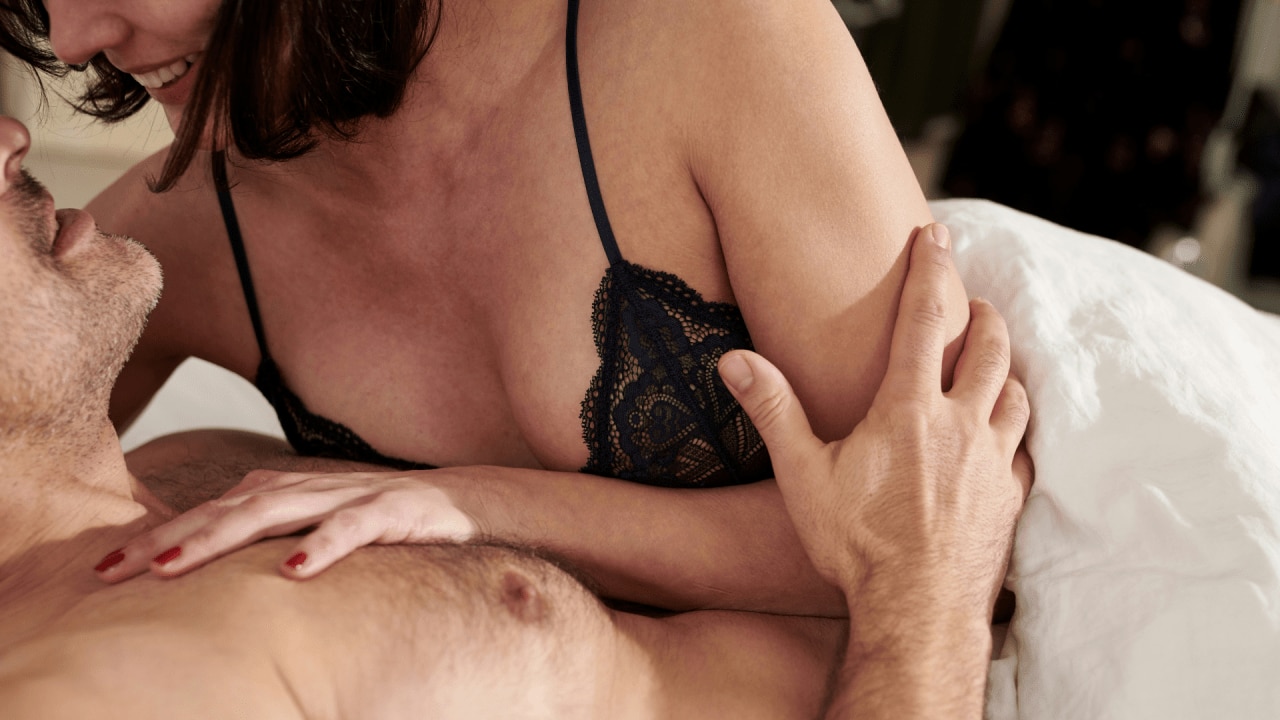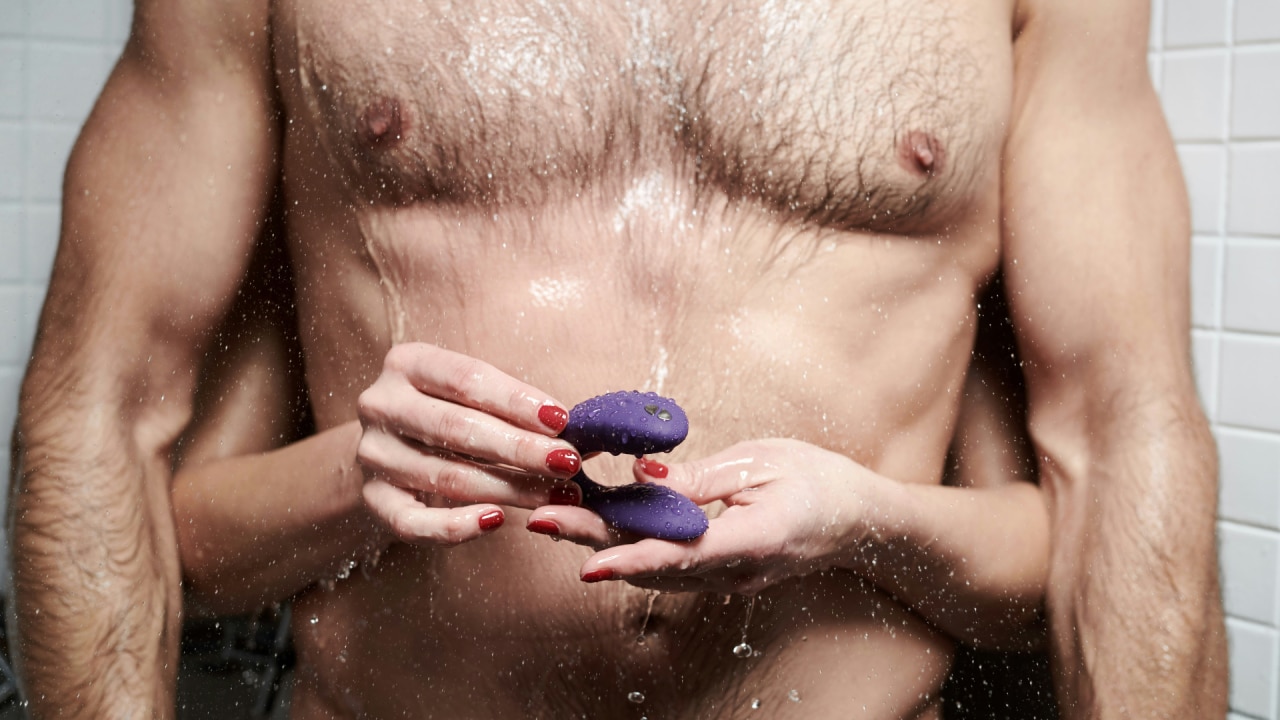Why 'outercourse' is the new intercourse
It's what's outside that counts

New data from Lovehoney shows 'outercourse' is set to be one of the biggest trends in 2024. But what actually is it? We asked the experts.
As sex positivity discourse and openness about sexuality grows, so too does our knowledge about what sex even means, and what good sex actually looks like.
For a long time, sex has been penis- and penetration-centric – with other forms of sexual exploration deemed a means to an end, rather than the destination itself. But it seems that reality is starting to change.
In Lovehoney’s recently-released 2024 Sex Trends Report, data showed that the orgasm gap between men and women is still high, in fact, it’s getting bigger – growing from 47 per cent in 2022, to 57.7 per cent in 2023.
It also revealed we’re still seriously lacking in clitoral education, a key reason why women are only orgasming 65 per cent of the times they have sex.
But things aren’t destined to stay that way forever. The report shows that one of the biggest sex trends experts expect to see this year is ‘outercourse’, which is already making waves in the bedroom.
So what actually is outercourse? We asked Christine Rafe, sex and relationship expert for Womanizer, and Cam Fraser, sex and relationship expert for Arcwave, to weigh in on the uptake of outercourse, and how everyone can level up their skills.
Like what you see? Sign up to our bodyandsoul.com.au newsletter for more stories like this.
What is outercourse?
“Outercourse refers to anything erotic, sensual or sexual that is not penetrative sex,” Rafe tells Body+Soul. “It considers sensuality and sexuality as a whole person and whole body experience and therefore is not restricted to non-penetrative genital touch.”
Fraser agrees, adding “This includes activities like kissing, touching, mutual masturbation, oral sex, and using sex toys.
“Outercourse is a broad spectrum of intimate acts that can be deeply satisfying and a vital part of sexual expression.”

Why is outercourse important?
“Considering outercourse as part of sex is crucial because it expands the definition of what sex can be,” says Fraser. “It moves us away from a penetration-centric view of sex to a more inclusive and holistic understanding.”
“This shift is important for several reasons: it accommodates different preferences and abilities, enhances emotional intimacy, and can lead to more fulfilling sexual experiences,” he continues. “It also challenges the narrow definitions of sex that often leave many people feeling excluded or dissatisfied.”
Plus, it can play a vital role in ensuring those involved in a sexual experience are ready for further intimacy.
“Outercourse is an essential component of the physiological and psychological arousal process for many people,” says Rafe. “Most people (regardless of their genitals) require non-genital and non-penetrative activities that they consider sensually or sexually relevant (whether that is environmental, spoken or touch based) in order to build arousal and readiness for genital and particularly penetrative touch.
However, it’s particularly important for women and those with a vagina, “as it takes an average of 17-minutes (and up to 40-minutes) for a vaginal canal to be ‘ready’ for penetration,” she adds, meaning it’s “adequately lubricated, has increased blood flow to the whole pelvic region but particularly the clitoris, and the cervix has retracted in the vaginal canal to support pleasurable penetration.”
To close the orgasm gap, and even just to ensure women are enjoying their sexual experiences, outercourse is crucial. “ Without outercourse and adequate time for this physiological process, those with vulvas may experience neutral or no pleasure, discomfort, pain and/or difficulty with penetration,” Rafe adds.
‘It also challenges the narrow definitions of sex that often leave many people feeling excluded or dissatisfied,” says Fraser.
Plus, it adds a whole new realm of variety and exploration to a sexual interaction, which can increase satisfaction in the short and long term.

What does outercourse look like for women or a person with a vulva?
“If we consider that outercourse is a whole person and whole body experience, all of the non-genital outercourse activities are the same regardless of the genitals that a person has,” says Rafe. “What activities a person likes will be unique to the individual based on their own desires and pleasure.”
However, genital-based outercourse for someone with a vulva could include “Stroking, tapping, applying pressure, licking and using external toys like a vibrator or clitoral suction toy,” Rafe continues. “It is not necessarily focused on the clitoris and can incorporate the inner and outer labia, entrance to the vagina and external anal play.”
Rafe adds that outercourse can include “anything that someone considers sensually or sexually relevant and can even include non-touch sensual/sexual activities!”
For either gender, that could include “erotic kissing or licking, touching of nipples, chest, stomach, inner thighs etc,” she says. “It could be clothes on or off, humping or grinding, and can also include dirty talk or video/phone sex.”

What does outercourse look like for men or a person with a penis?
For men, or anyone with a penis, outercourse could include “manual stimulation of the penis, testicles, and other erogenous zones, oral sex, sensual massage, and exploring different types of touch and pressure,” says Fraser. “It's about understanding what feels good beyond just the act of penetration and embracing a wider range of sensual experiences.”
Similarly, beyond the genitals, Fraser adds that outercourse could include “caressing, massaging, and kissing various parts of the body, such as exploring sensitive areas like the neck, ears, chest, inner thighs, and more.
“It also involves emotional intimacy, like sharing fantasies, deep conversations, and building a connection that enhances the physical experience,” he says. “This approach recognizes that sexual pleasure is not just about genital stimulation but involves the entire body and mind.”

Do those in the LGBTQIA+ community approach outercourse differently to heterosexual people?
“Because desire, pleasure and sexual interest is unique to each individual, how someone approaches outercourse is not necessarily influenced by their sexuality, but is more likely to be influenced by their particular pleasure needs,” says Rafe. Anyone with a vulva may enjoy the sensation of nipple or anal play.
Similarly, men’s approach to outercourse will be influenced by their personal preferences, prior experiences and their relationship dynamics, but “in same-sex relationships, outercourse might be a more central aspect of sexual activity,” says Fraser.
That being said, Rafe points out that “where there is no penis involved in a sexual experience, there is likely more focus on outercourse activities and less focus on penetrative sex (although it is still possible for two vulva-owners to have penetrative sex using fingers and toys).”

How can we improve our approach to outercourse?
Incorporating outercourse into sexual experiences in a group effort, but there are small changes everyone can make to bring it to the fore.
“Men can improve their approach to and perceptions of outercourse by embracing a more open-minded and exploratory attitude towards sex,” says Fraser. “This involves recognizing the value of non-penetrative acts in providing pleasure and intimacy.
Education plays a big role in this, but we need to be proactive in seeking it out – learning about the “different ways to give and receive pleasure, communicating openly with their partners about their desires and boundaries, and being willing to experiment and learn,” he says.
Our working model of sex is “performance-based,” says Rafe, meaning erections, penetration, and ejaculation. While this is beneficial for men seeking these outcomes, it does very little for the partner on the receiving end.
“If we can challenge our beliefs or perceptions that sex is penis-centric and penetratively focused, and acknowledge that most people have sex for non-reproductive purposes, then we can move toward a pleasure-focused model of sex.” she continues.
If we can challenge the penis-centric model, and move to a goal of pleasure over reproduction, we can widen the definition of sex altogether, and seek more enjoyable sexual experiences for all.
“Remind yourself that your body requires outercourse activities to support desire, arousal and genital pleasure,” says Rafe. “If we know this, then it seems obvious that outercourse activities are a crucial component in sexual pleasure and intimacy.”
More Coverage
Originally published as Why 'outercourse' is the new intercourse





